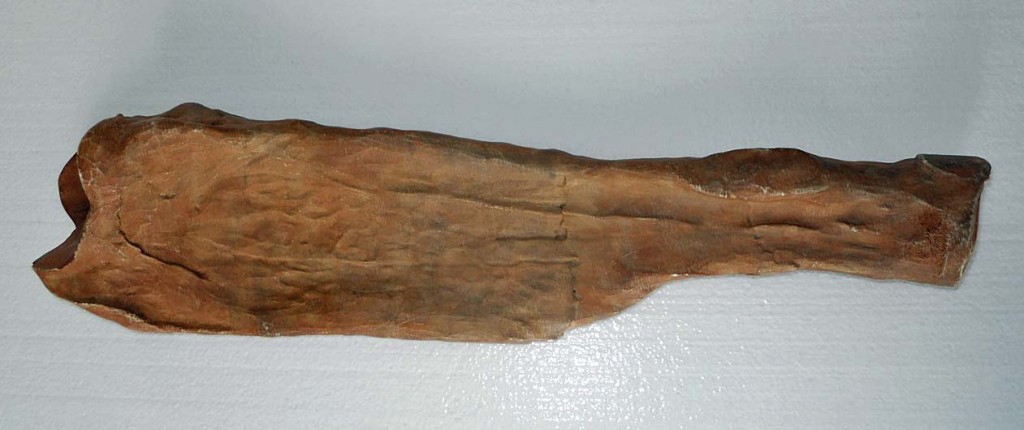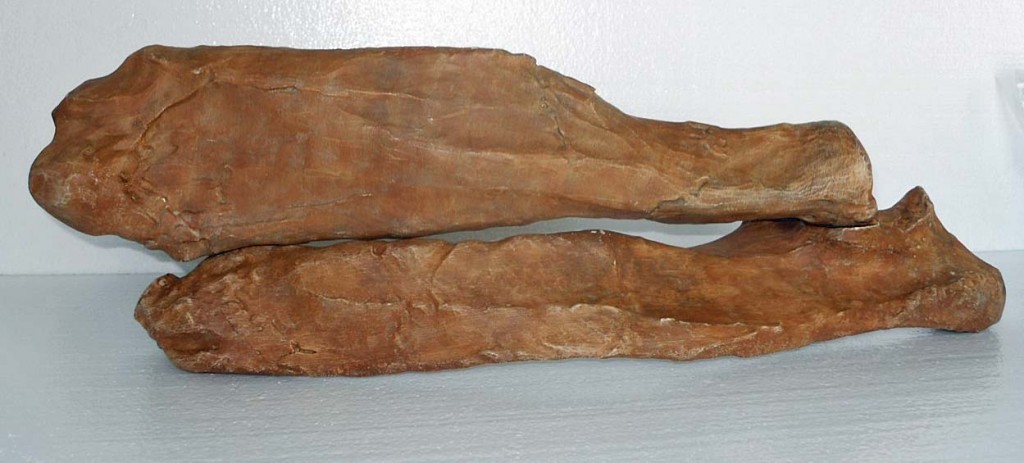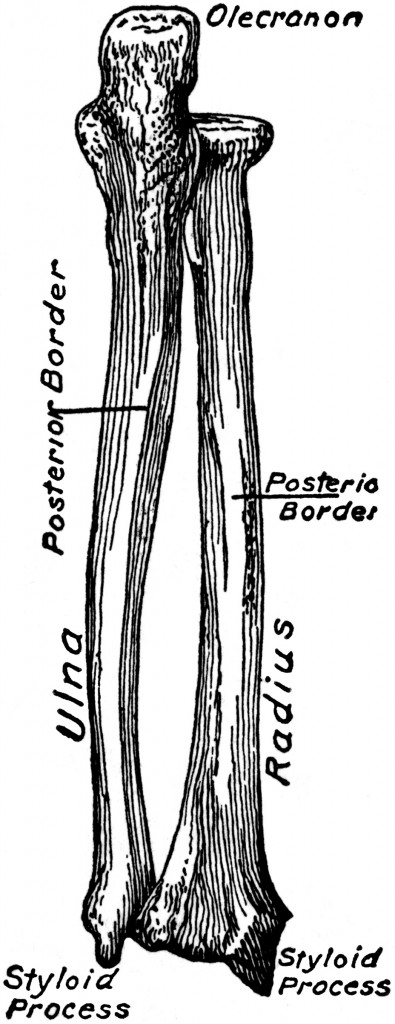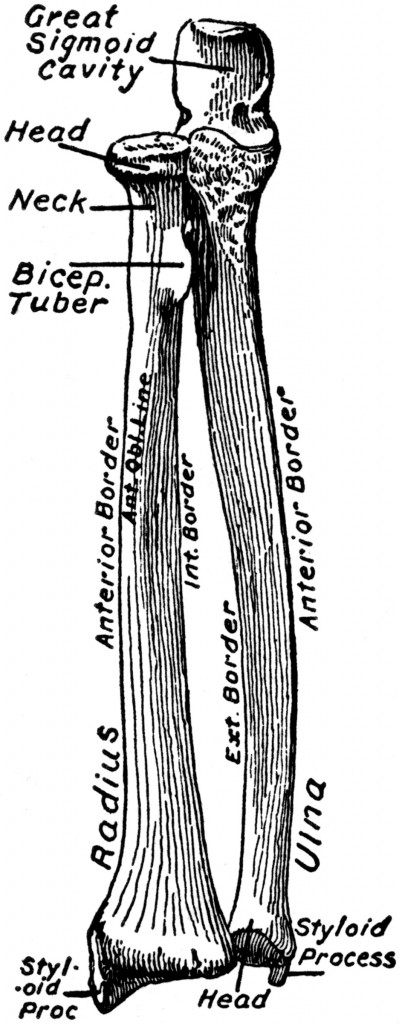Introduction to Walk Like a Sloth: lessons in ground sloth locomotion
 Getting Oriented
Getting Oriented
The lower arms of mammals have two bones–the radius on the thumb side and the ulna on the little finger side. The narrow end of the radius (also called the head) is the proximal or near end. If it looks like a small wheel, it is! The wheel turns in the radial notch of the ulna. Note that the articulating surface on the head of the radius covers about 75° of a circle; this wheel covers about 180° on the human radius, indicating more flexibility in humans than in Megalonyx. The large end is the wrist end; it has a small rough bump where a tendon anchors it to a corresponding spot on the end of the ulna. The shaft of the radius is notably triangular with a prominent interosseous crest (literally “between bones”) anchoring the muscles used to turn the paws up and down.




